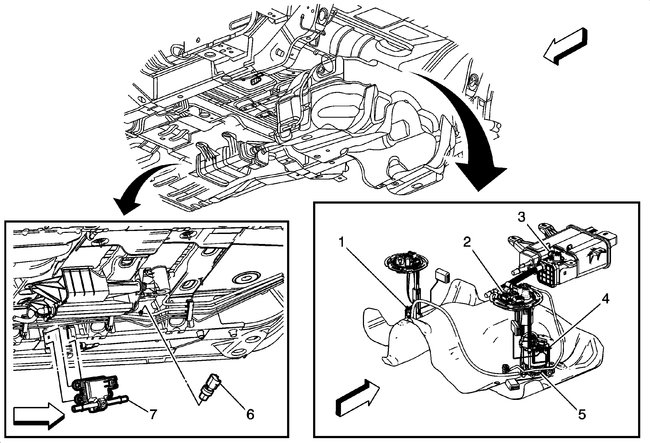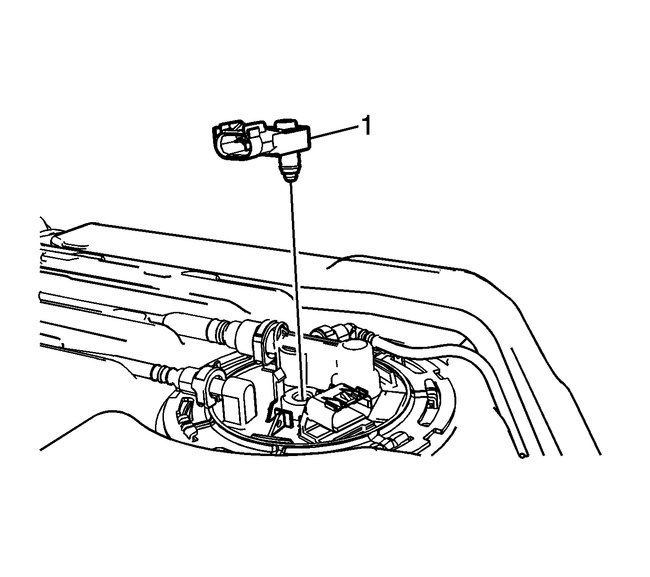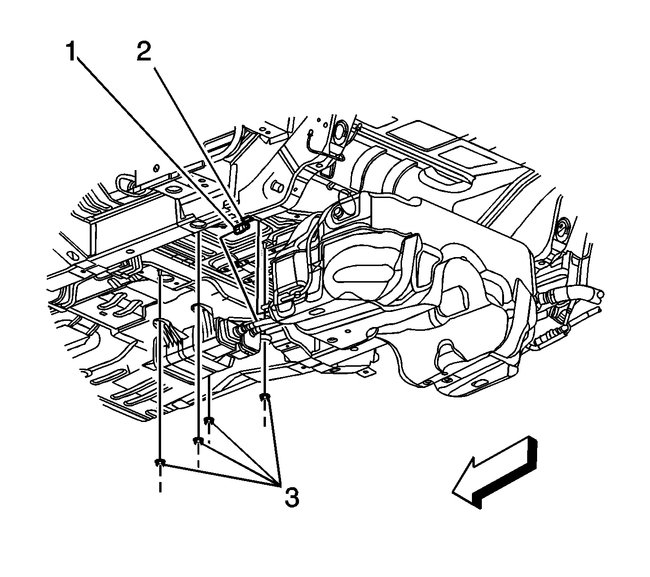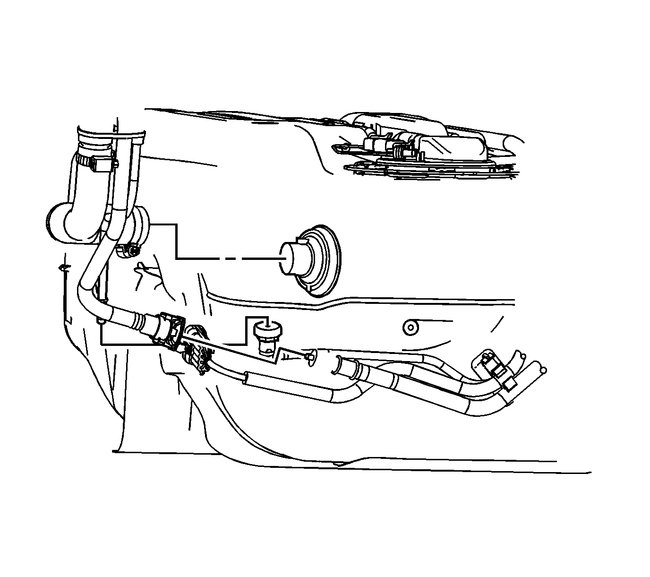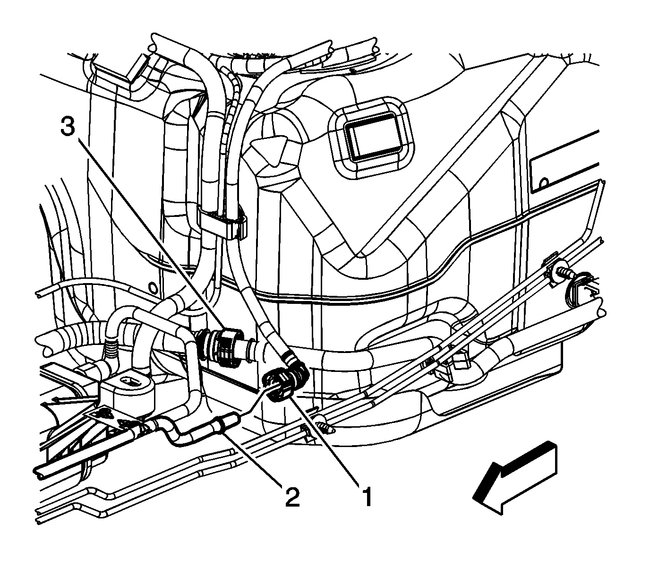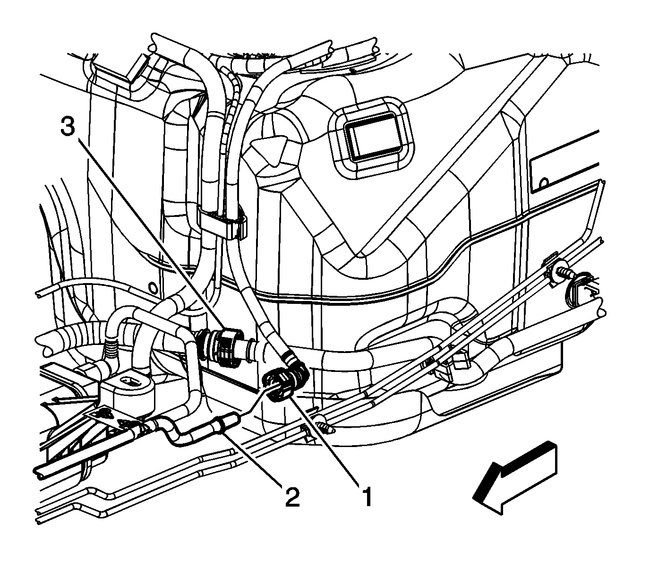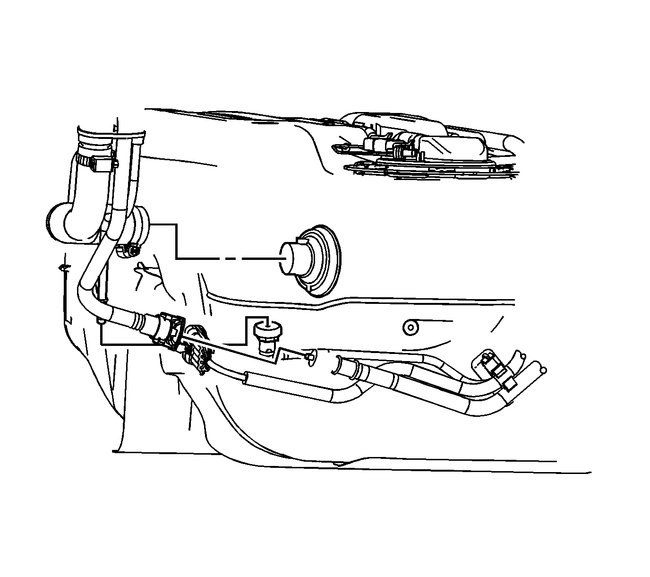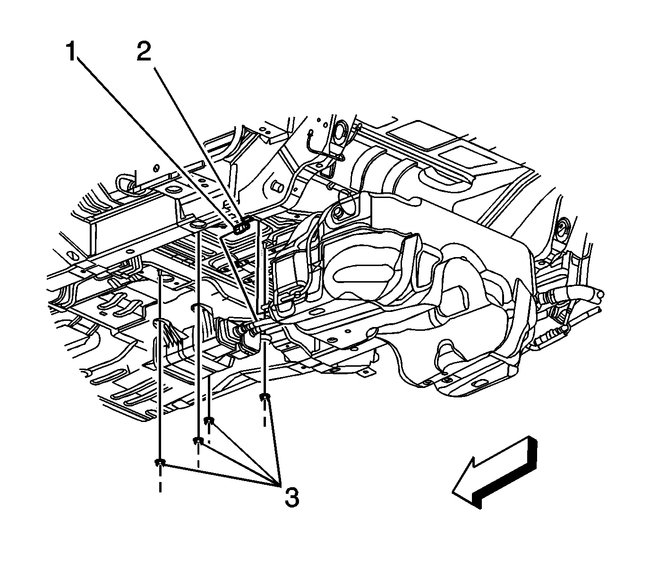Hi and thanks for using 2CarPros.
The fuel tank pressure sensor is on top of the tank. See picture 1 for the location of the pressure sensor. Locate number 2 in the picture. Also, what code is found when the computer is scanned? Does it indicate an issue with the evaporative emissions system (EVAP) or is it specific to the pressure sensor?
If possible, can you provide the code that was found when scanning the computer?
_____________________________
If you are certain the sensor needs replaced, here are the directions.
Picture 2 and 3 are the directions and location of the pressure sensor. Sorry I had to provide the directions in picture form, but it was my only choice.
_____________________________
You will need to remove the fuel tank. Here are the directions for tank replacement. You will not be replacing the tank, but the directions provide removal and install instructions. Starting with picture 4, the remaining pics correlate with these directions.
_____________________________
Fuel Tank Replacement (FWD)
Removal Procedure
Warning
Do not allow smoking or the use of open flames in the area where work on the fuel or EVAP system is taking place. Anytime work is being done on the fuel system, disconnect the negative battery cable, except for those tests where battery voltage is required.
1. Ensure that the fuel level in the tank is less than 1/4 full. If necessary, drain the fuel tank to at least this level. Refer to Fuel Tank Draining See: Fuel Tank > Procedures > Fuel Tank Draining.
Warning
Fuel supply lines will remain pressurized for long periods of time after the engine is shutdown. This pressure must be relieved before servicing the fuel system.
2. Relieve the fuel system pressure. Refer to Fuel Pressure Relief See: Fuel Pressure Release > Procedures > Fuel Pressure Relief.
3. Disconnect the negative battery cable. Refer to Battery Negative Cable Disconnection and Connection See: Negative > Removal and Replacement > Battery Negative Cable Disconnection and Connection.
4. Raise and support the vehicle. Refer to Lifting and Jacking the Vehicle See: Vehicle Lifting > Procedures > Lifting and Jacking the Vehicle.
5. Remove the exhaust system. Refer to Exhaust Muffler Replacement See: Muffler > Removal and Replacement > Exhaust Muffler Replacement.
6. Disconnect the canister vent valve electrical connectors.
7. Disconnect the vent hose from the canister filter.
8. Disconnect the fuel tank vent pipe from the evaporative emission canister.
Warning
Whenever fuel lines are removed, catch fuel in an approved container. Container opening must be a minimum of 300 mm (12 in) diameter to adequately catch the fluid.
Caution:
Clean all fuel pipe connections and surrounding areas before disconnecting the fuel pipes to avoid contamination of the fuel system.
9. Disconnect the chassis fuel supply line (2) from the fuel tank.
10. Disconnect the fuel filler tube, EVAP vent hose, and fresh air hose from the fuel tank.
11. Disconnect the fuel tank electrical connector and remove the electrical connector retainer from the rear frame.
Caution:
Do not bend the fuel tank straps. Bending the fuel tank straps may cause damage to the straps.
Note:
Do not lower the rear frame. It is not necessary to lower the rear frame for fuel tank removal.
12. Support the fuel tank using a suitable jack.
13. Remove the fuel tank strap nuts, and lower the fuel tank straps.
14. Lower the fuel tank from the underbody of the vehicle.
15. If replacing the fuel tank, remove the fuel tank module assemblies. Refer to Fuel Tank Fuel Pump Module Replacement See: Fuel Pump > Removal and Replacement > Fuel Tank Fuel Pump Module Replacement and Fuel Tank Fuel Pump Module Replacement - Secondary (With Out) See: Fuel Pump > Removal and Replacement > Fuel Tank Fuel Pump Module Replacement - Secondary (With Out).
16. If replacing the fuel tank, remove the heat shield, hoses and wiring harness, and transfer to the new tank.
Installation Procedure
1. If previously removed, install the fuel tank module assemblies. Refer to Fuel Tank Fuel Pump Module Replacement See: Fuel Pump > Removal and Replacement > Fuel Tank Fuel Pump Module Replacement and Fuel Tank Fuel Pump Module Replacement - Secondary (With Out) See: Fuel Pump > Removal and Replacement > Fuel Tank Fuel Pump Module Replacement - Secondary (With Out).
2. Using an adjustable jack, slowly raise and reposition the fuel tank (3) in order to install the tank to the vehicle.
Caution:
Refer to Fastener Caution See: Vehicle > Technician Safety Information > Fastener Caution.
3. Install the fuel tank straps and the fuel tank strap-to-body nuts and tighten to 20 Nm (15 lb ft).
4. Connect the fuel tank electrical connector and install the electrical connector retainer to the rear frame.
5. Connect the EVAP vent, and fresh air hoses to the fuel tank.
6. Connect the fuel filler tube to the fuel tank. Tighten the fuel filler tube clamp to 5 Nm (44 lb in).
7. Connect the chassis fuel supply line (2) to the fuel tank.
8. Connect the fuel tank vent pipe to the evaporative emission canister.
9. Connect the vent hose to the canister filter.
10. Connect the canister vent valve electrical connector.
11. Install the exhaust system. Refer to Exhaust Muffler Replacement See: Muffler > Removal and Replacement > Exhaust Muffler Replacement.
12. Lower the vehicle.
13. Fill the fuel tank with gasoline.
14. Connect the negative battery cable. Refer to Battery Negative Cable Disconnection and Connection See: Negative > Removal and Replacement > Battery Negative Cable Disconnection and Connection.
15. Prime the fuel system:
1. Cycle the ignition ON for 5 seconds and then OFF for 10 seconds.
2. Repeat the previous step twice.
3. Crank the engine until it starts. The maximum starter motor cranking time is 20 seconds.
4. If the engine does not start, repeat steps 15.1-15.3.
___________________________
I would hate to see you go through this if the sensor isn't the issue. If you have the trouble code, let me know it so I can confirm this is the actual problem.
I hope this helps. Let me know if you have other questions.
Take care,
Joe
Images (Click to make bigger)
SPONSORED LINKS
Thursday, December 6th, 2018 AT 7:13 PM
